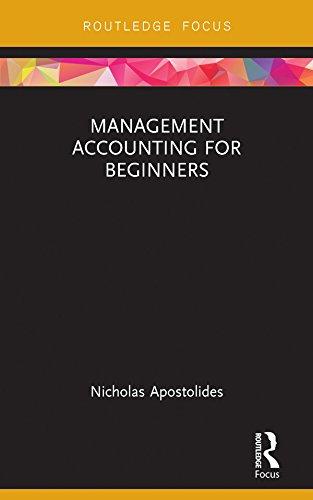Question
Holbrook Corporation has three divisions: pulp, paper, and fibers. Holbrook's new controller, Stefan Mayer, is reviewing the allocation of fixed corporate-overhead costs to the three
Holbrook Corporation has three divisions: pulp, paper, and fibers. Holbrook's new controller, Stefan Mayer, is reviewing the allocation of fixed corporate-overhead costs to the three divisions. He is presented with the following information for each division for 2012:
(Click the icon to view the information.)
Until now, Holbrook Corporation has allocated fixed corporate-overhead costs to the divisions on the basis of division margins. Mayer asks for a list of costs that comprise fixed corporate overhead and suggests the following new allocation bases:
(Click the icon to view the fixed corporate overhead and new allocation bases.) Read the requirements.
Requirement 1. Allocate 2012 fixed corporate-overhead costs to the three divisions using division margi the allocation base. What is each division's operating margin percentage (division margin minus allocatec fixed corporate-overhead costs as a percentage of revenues)?
Allocate the fixed corporate-overhead costs, then calculate the division operating margins in dollars and percentage of revenue. (Round allocation proportions to one decimal place, X.X%, and dollar amounts to nearest dollar. Enter operating margin percentages to one decimal, X.X%.)
Pulp Paper Fibers
Division margin $ 2,300,000 $ 7,200,000 $ 10,500,000 Allocated fixed corporate-overhead I I I I Operating margin I I I I I
Operating margin % I % I I % I I %
Requirement 2. Allocate 2012 fixed costs using the allocation bases suggested by Mayer. What is each division's operating margin percentage under the new allocation scheme?
Allocate the fixed corporate-overhead costs, then calculate the division operating margins in dollars and < percentage of revenue. (Round allocation proportions to one decimal place, X.X%, and dollar amounts to nearest dollar. Round the operating margin percentages to one decimal, X.X%. Use parentheses or a mi1 sign for negative amounts.)
Division margin
Allocated fixed corporate-overhead costs: Human resource management
Facility
Corporate administration Operating margin
Operating margin %
Pulp Paper Fibers
$ 2,300,000 $ 7,200,000 $ 10,500,000
%
Requirement 3. Compare and discuss the results of requirements 1 and 2. If division performance is lin to operating margin percentage, which division would be most receptive to the new allocation scheme? Which division would be the least receptive? Why?
2.
(cont.)
When corporate overhead is allocated to the divisions on the basis of division margins (requirement 1),
|
Fibers Paper Pulp |
each division
the Paper and Fibers divisions the Pulp and Paper divisions the Pulp and Fibers divisions
are (is) profitable and the
division is the most profitable while
Fibers Paper Pulp
division is the least profitable. When Mayer's suggested bases are used to allocate the different
types of corporate overhead costs (requirement 2), the
division is the most profitable.
Fibers Paper Pulp
|
Fibers Paper Pulp |
division is not profitable and the
|
Fibers Paper Pulp |
If division performance is linked to operating margin percentages, will resist this new way of
allocating corporate costs, which causes its operating margin to
|
decrease to a loss (negative operating margin). increase significantly. |
|
Fibers Paper Pulp |
will welcome the change-its operating marg
percentage rises the most.
Requirement 4. Which allocation scheme should Holbrook Corporation use? Why? How might Mayer overcome any objections that may arise from the divisions?
The
|
new approach old approach |
is preferable because it is based on cause-and-effect relationships between costs a
their respective cost drivers in the long run. To overcome objections from the divisions, Mayer may
|
initially choose not to allocate just begin allocating |
corporate overhead to divisions when evaluating performance.
Data Table
2.Pulp Paper Fibers
(cont.) Revenues $ 9,000,000 $ 16,000,000 $ 27,500,000
Direct manufacturing costs 3,700,000 7,600,000 11,200,000 Division administrative costs 3,000,000 1,200,000 5,800,000
Division margin 2,300,000 7,200,000 10,500,000
| Number of employees | 560 | 210 | 630 | |
| Floor space (square feet) | 40,000 | 30,080 | 89,920 | |
|
Data Table |
|
|
| |
| Fixed Corporate Overhead Costs | Suggested Allocation Bases |
| ||
| Human resource management | $ 1,600,000 | Number of employees |
| |
| Facility | 3,600,000 | Floor space (square feet) |
| |
| Corporate Administration | 4,800,000 | Division administrative costs |
| |
| Total | $10,000,000 |
|
| |
|
Requirements |
|
|
| |
| Requirements |
|
|
| |
Allocate 2012 fixed corporate-overhead costs to the three divisions using division margin as the allocation base. What is each division's operating margin percentage (division margin minus allocated fixed corporate-overhead costs as a percentage of revenues)?
2. Allocate 2012 fixed costs using the allocation bases suggested by Mayer. What is each division's operating margin percentage under the new allocation scheme?
Compare and discuss the results of requirements 1 and 2. If division performance is linked to operating margin percentage, which division would be most receptive to the new allocation scheme? Which division would be the least receptive? Why?
Which allocation scheme should Holbrook Corporation use? Why? How might Mayer overcome any objections that may arise from the divisions?
Step by Step Solution
There are 3 Steps involved in it
Step: 1

Get Instant Access to Expert-Tailored Solutions
See step-by-step solutions with expert insights and AI powered tools for academic success
Step: 2

Step: 3

Ace Your Homework with AI
Get the answers you need in no time with our AI-driven, step-by-step assistance
Get Started


